Do you know how to greet a Chinese in the past? You must ask: "have you eaten?" Chinese people take food as the paramount necessity, and their long history justifies it. Food has evolved from merely a survival necessity to a unique culture bearing Chinese philosophy and thinking. The history of Chinese food culture can be roughly divided into five phases.
Embryonic Stage (Primitive Times)
In primitive society, eating was for survival. There was no such thing as food culture. People had what they could get until the discovery of fire.
Suiren made a significant discovery that fire could be made by rubbing sticks. Primitives began to cook food. 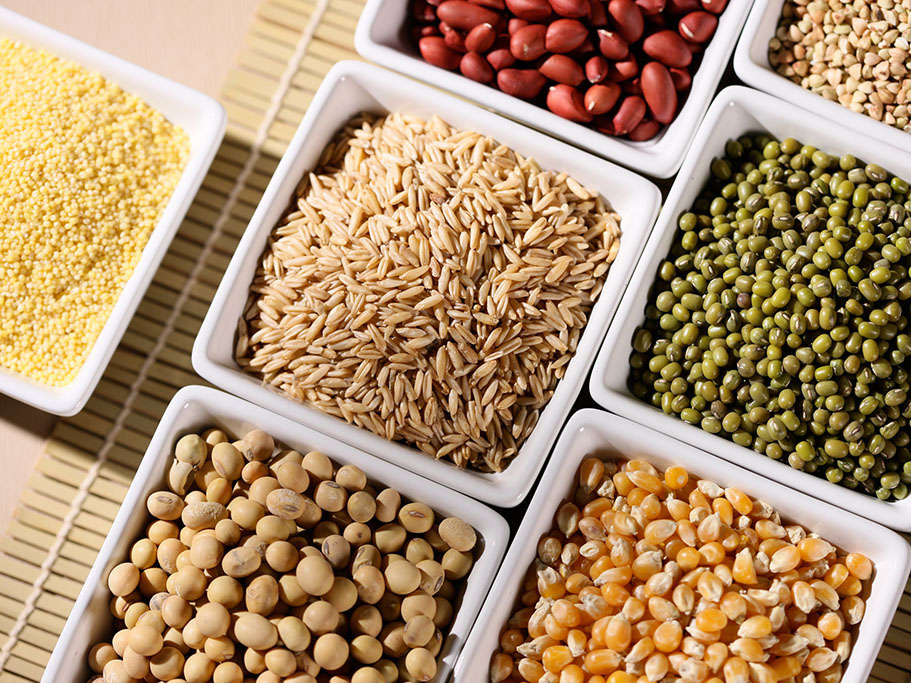 With no sophisticated utensils, meats were either directly roasted on fire or boiled with water. The food supply was severely unstable. Starvation was common.
Fuxi, a respected leader of ancient Chinese tribes, taught commons to fish. He also invented the primordial eight trigrams to guide people through the bad weather and complicated landform. Therefore, primitives had some food choices.
Shennon, a pioneer in agriculture and Chinese medicine, tested hundreds of herbs and taught people to consume plants. He also created some farming tools and simple utensils, enabling people with a more stable food supply and food choices.
With the discovery of fire, diversification of food, and advance of farming techniques, ancient Chinese began to grow grains, including millet, barley, beans, wheat, and rice. Since the Yellow Emperor, agriculture took shape, solar terms were invented to guide farming, and more production tools and utensils were invented. People had more food choices and cooking techniques.
With no sophisticated utensils, meats were either directly roasted on fire or boiled with water. The food supply was severely unstable. Starvation was common.
Fuxi, a respected leader of ancient Chinese tribes, taught commons to fish. He also invented the primordial eight trigrams to guide people through the bad weather and complicated landform. Therefore, primitives had some food choices.
Shennon, a pioneer in agriculture and Chinese medicine, tested hundreds of herbs and taught people to consume plants. He also created some farming tools and simple utensils, enabling people with a more stable food supply and food choices.
With the discovery of fire, diversification of food, and advance of farming techniques, ancient Chinese began to grow grains, including millet, barley, beans, wheat, and rice. Since the Yellow Emperor, agriculture took shape, solar terms were invented to guide farming, and more production tools and utensils were invented. People had more food choices and cooking techniques.
Forming Stage (Xia Dynasty - Warring States Period)
Food Ingredients: five grains (millet, barley, beans, wheat, and rice), six livestock (horse, ox, goat, pig, chicken, and dog), six beasts (elk, deer, bear, wild rabbit, wolf, and wild pig), six birds (wild goose, quail, pheasant, turtledove, pigeon, and swan), seafood, insects, thallophyte, vegetables, and grains.
Cooking Techniques: steaming, boiling, roasting, and baking.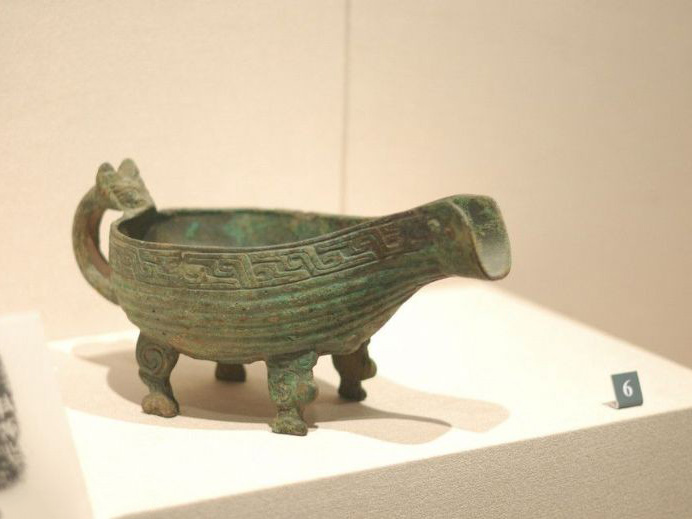 Food Container: besides potteries and bronze wares, delicate lacquer wares, ivories, wood wares, bone objects, jade, and stone.
During the Xia dynasty (2070.c-1600.c), the founder Da Yu regulated the Yellow River and secured agricultural productions. Xia dynasty people began to enjoy sustainable food supply. The food choices are diversified. It's said that King Qi used to entertain the tribe leaders with grand feasts, which had many delicacies.
In the Shang dynasty (1600.c-1046.c), gastronomes emerged. It's said that the Shang chieftain Wang Hai was a foodie. He excelled at raising goats, pigs, ox, and horses and loved to invent new food. Yin Yi, a minister under the Shang King Cheng Tang, was also a gourmet. He was particular about the meat boiling. He believed that meat should be cooked at a different temperature and soup, and each animal had its best part to eat. Thus, Yin Yi was respected as the God of Cooking. Besides, the discovery of a considerable amount of the Shang dynasty food wares like a bowl, receptacle, Dou, Jue, Zun, and Hu indicated that Shang people could hold big feasts.
By the Zhou dynasty (1046.c-256.c), meat cooking became more sophisticated, and more spices appeared.
Food Container: besides potteries and bronze wares, delicate lacquer wares, ivories, wood wares, bone objects, jade, and stone.
During the Xia dynasty (2070.c-1600.c), the founder Da Yu regulated the Yellow River and secured agricultural productions. Xia dynasty people began to enjoy sustainable food supply. The food choices are diversified. It's said that King Qi used to entertain the tribe leaders with grand feasts, which had many delicacies.
In the Shang dynasty (1600.c-1046.c), gastronomes emerged. It's said that the Shang chieftain Wang Hai was a foodie. He excelled at raising goats, pigs, ox, and horses and loved to invent new food. Yin Yi, a minister under the Shang King Cheng Tang, was also a gourmet. He was particular about the meat boiling. He believed that meat should be cooked at a different temperature and soup, and each animal had its best part to eat. Thus, Yin Yi was respected as the God of Cooking. Besides, the discovery of a considerable amount of the Shang dynasty food wares like a bowl, receptacle, Dou, Jue, Zun, and Hu indicated that Shang people could hold big feasts.
By the Zhou dynasty (1046.c-256.c), meat cooking became more sophisticated, and more spices appeared. 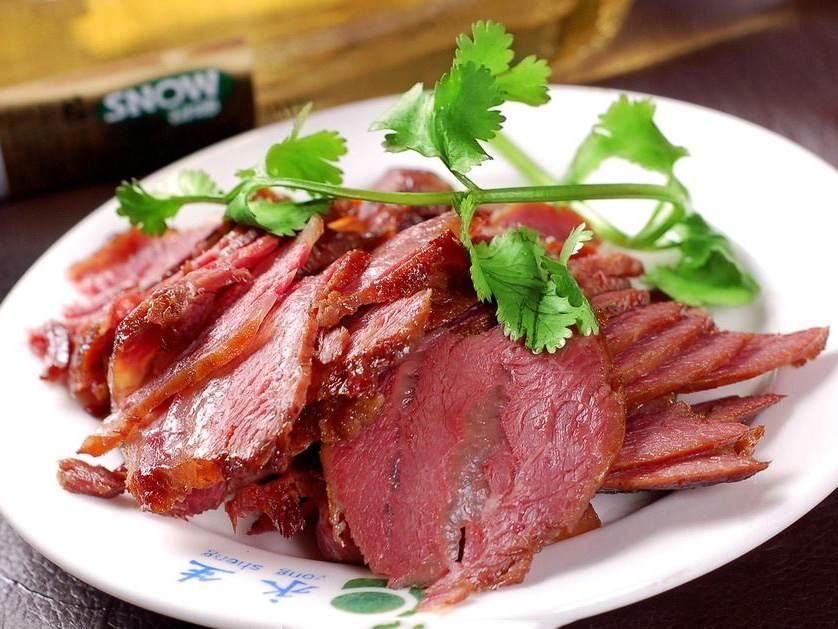 The book Zhou Li (The Rites of Zhou) mentioned eight delicacies, including Chun Ao (rice with meat sauce), Chun Mu (yellow rice with meat sauce), Pao Tun (simmering, roasting and frying suckling pig), Pao Yang (simmering, roasting and frying lamb), Dao Zhen (grilling tenderloin of the ox, goat, and deer), Zi Zhen (wine-sugar mutton and beef), Ao Zhen (spiced beef), and Gan Liao (oil-roasting dog liver). Since then, cooking became an important art.
Spring and Autumn and the Warring States Period was a time of national fusion. In the north, Qi and Lu States developed relatively advanced cooking techniques, laying a foundation for the future Lu Cuisine. In the south, Chu State controlled most parts of southeast China, including the affluent Zhejiang and Jiangsu. The rich vegetables, plants, and seafood provided more food choices for southerners, laying a foundation for today's Zhe Cuisine and Su Cuisine. In the west, Qin State occupied ancient Ba and Shu States (located in today's Sichuan Basin). Qin official Li Bing directed the Dujiangyan irrigation project and transformed Sichuan from an initially infertile land to a land of abundance, significantly promoting the formation of Sichuan Cuisine.
The book Zhou Li (The Rites of Zhou) mentioned eight delicacies, including Chun Ao (rice with meat sauce), Chun Mu (yellow rice with meat sauce), Pao Tun (simmering, roasting and frying suckling pig), Pao Yang (simmering, roasting and frying lamb), Dao Zhen (grilling tenderloin of the ox, goat, and deer), Zi Zhen (wine-sugar mutton and beef), Ao Zhen (spiced beef), and Gan Liao (oil-roasting dog liver). Since then, cooking became an important art.
Spring and Autumn and the Warring States Period was a time of national fusion. In the north, Qi and Lu States developed relatively advanced cooking techniques, laying a foundation for the future Lu Cuisine. In the south, Chu State controlled most parts of southeast China, including the affluent Zhejiang and Jiangsu. The rich vegetables, plants, and seafood provided more food choices for southerners, laying a foundation for today's Zhe Cuisine and Su Cuisine. In the west, Qin State occupied ancient Ba and Shu States (located in today's Sichuan Basin). Qin official Li Bing directed the Dujiangyan irrigation project and transformed Sichuan from an initially infertile land to a land of abundance, significantly promoting the formation of Sichuan Cuisine.
Developing Stage (Qin Dynasty - Pre-Tang Dynasty)
Qin Shi Huang unified China and included today's Guangxi and Guangdong into the Qin empire. 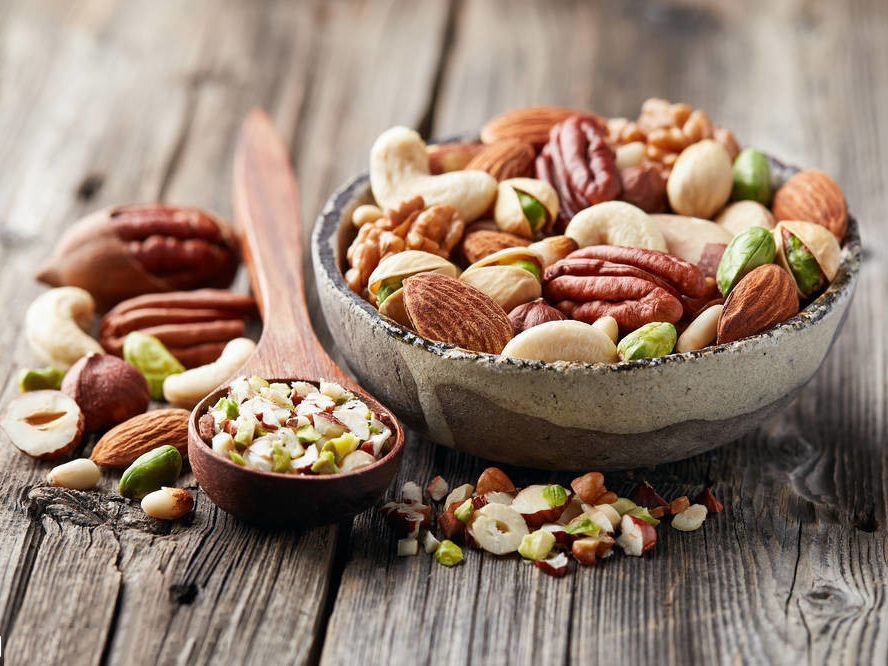 Since then, the communication between central China and south areas became frequent, promoting the development of Cantonese cuisine.
During the Han dynasty, the emperors had a mature food management system. Ordinary people could enjoy more food. Besides, with the opening of the Silk Road, many specialties from today's Xinjiang and Central Asia were brought into central China, including cucumber, walnut, coriander, flax, carrot, pomegranate, watermelon, grape, spinach, celery, alfalfa, lettuce, garlic, and green onion. Also, people began to consume vegetable oil, like hemp seed oil, colza oil, linseed oil, and soybean oil.
By the Wei, Jin, Southern, and Northern Dynasties, cooked wheaten food prevailed among commons. It's said that Zhuge Liang made steamed buns with meat fillings as sacrificial offerings for the deceased soldiers. Plus, tons of nomadic people came to central China, and along with them were their food, like kabob and instant-boiled meat.
Since then, the communication between central China and south areas became frequent, promoting the development of Cantonese cuisine.
During the Han dynasty, the emperors had a mature food management system. Ordinary people could enjoy more food. Besides, with the opening of the Silk Road, many specialties from today's Xinjiang and Central Asia were brought into central China, including cucumber, walnut, coriander, flax, carrot, pomegranate, watermelon, grape, spinach, celery, alfalfa, lettuce, garlic, and green onion. Also, people began to consume vegetable oil, like hemp seed oil, colza oil, linseed oil, and soybean oil.
By the Wei, Jin, Southern, and Northern Dynasties, cooked wheaten food prevailed among commons. It's said that Zhuge Liang made steamed buns with meat fillings as sacrificial offerings for the deceased soldiers. Plus, tons of nomadic people came to central China, and along with them were their food, like kabob and instant-boiled meat.
Mature Stage (Tang Dynasty - Qing Dynasty)
Tang and Song dynasties represent the glory of the Chinese feudal dynasties. 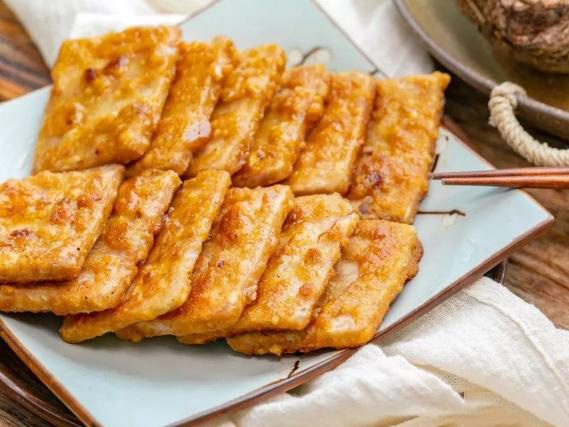 Food culture had gone up a new level at the time. The inclusive and powerful Tang dynasty allowed more cultural exchange between China and other states. The living condition was improved significantly. Food was not just for survival, but enjoyment. The cooking techniques were greatly advanced, and food choices were enlarged.
During the Song dynasty, food culture is even more prosperous than before. Song people invented the iron pan and began to fry food with plant oil. Besides, unlike in previous dynasties, the Song court abolished the curfew, allowing people to have more nightlife. Therefore, many restaurants, hotels, tea houses, and shops opened for business in the late evening. Many Song people adopted the habit of eating an extra meal in the evening. It's said that the night markets in Kaifeng (the capital of the northern Song dynasty) could serve over 800 kinds of food, and there were over 20 types of cooking techniques.
With the abundance of food choices, Song people grew more fastidious about the meal.
Food culture had gone up a new level at the time. The inclusive and powerful Tang dynasty allowed more cultural exchange between China and other states. The living condition was improved significantly. Food was not just for survival, but enjoyment. The cooking techniques were greatly advanced, and food choices were enlarged.
During the Song dynasty, food culture is even more prosperous than before. Song people invented the iron pan and began to fry food with plant oil. Besides, unlike in previous dynasties, the Song court abolished the curfew, allowing people to have more nightlife. Therefore, many restaurants, hotels, tea houses, and shops opened for business in the late evening. Many Song people adopted the habit of eating an extra meal in the evening. It's said that the night markets in Kaifeng (the capital of the northern Song dynasty) could serve over 800 kinds of food, and there were over 20 types of cooking techniques.
With the abundance of food choices, Song people grew more fastidious about the meal. 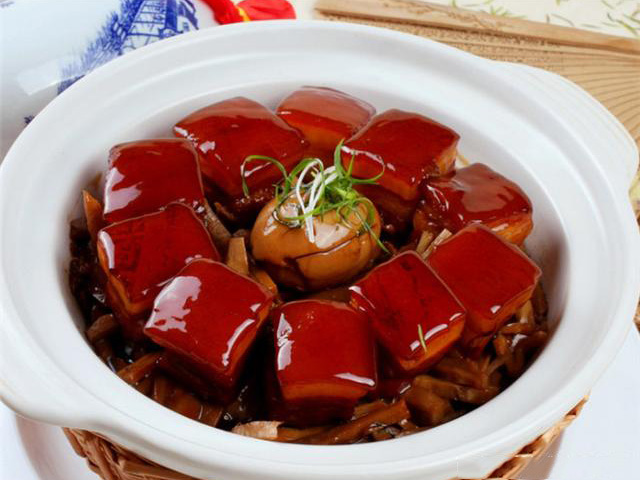 According to the book Jiang Xing Za Lu, a retired minister wanted to have a dinner party with his friends. His friend recommended a chef to him, and the chef required ten goats and 2.5kg green onions to make the meal. The minister wondered why a meal could use ten goats. The chef told him that only the meat on the goat's face would be used to cook dishes. Besides, Song dynasty chefs were particular about the utensils. A good chef only used tools made of jade and agate. Not only the rich people were demanding in terms of food, but ordinary people. In the Song dynasty, a petty dealer who couldn't offer food with delicate packing or decoration won't have much business.
In the Yuan dynasty, the Chinese territory was unprecedentedly large. Chinese food was further enriched by other groups. Mongolian people's love of instant-boiled mutton was gradually adopted by Han people as well. Moon-cake became a must-have dessert at the Mid-Autumn Festival. The first roast duck restaurant was opened in Dadu (today's Beijing), and Roast Whole Lamb became a famous dish.
According to the book Jiang Xing Za Lu, a retired minister wanted to have a dinner party with his friends. His friend recommended a chef to him, and the chef required ten goats and 2.5kg green onions to make the meal. The minister wondered why a meal could use ten goats. The chef told him that only the meat on the goat's face would be used to cook dishes. Besides, Song dynasty chefs were particular about the utensils. A good chef only used tools made of jade and agate. Not only the rich people were demanding in terms of food, but ordinary people. In the Song dynasty, a petty dealer who couldn't offer food with delicate packing or decoration won't have much business.
In the Yuan dynasty, the Chinese territory was unprecedentedly large. Chinese food was further enriched by other groups. Mongolian people's love of instant-boiled mutton was gradually adopted by Han people as well. Moon-cake became a must-have dessert at the Mid-Autumn Festival. The first roast duck restaurant was opened in Dadu (today's Beijing), and Roast Whole Lamb became a famous dish. 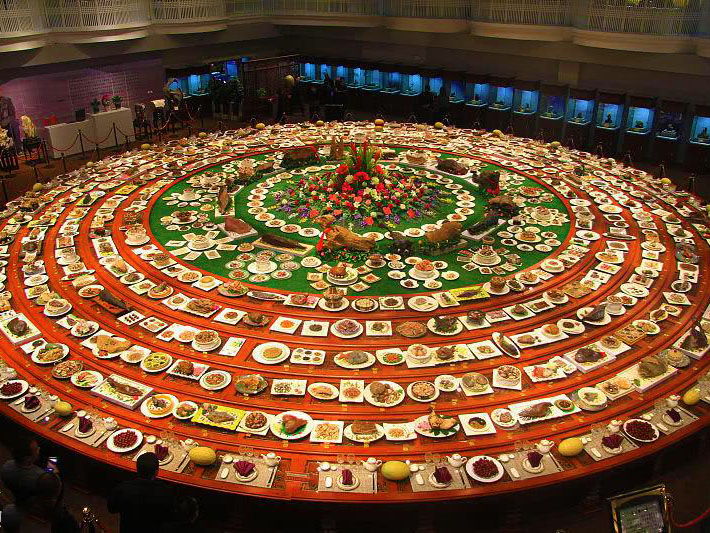 Also, Mongolian people brought many Muslims to central China, forming the unique Chinese Muslim food culture.
During the Ming dynasty, the Hui Cuisine became popular as Zhu Yuanzhang (the founder of the Ming dynasty) came from Anhui province. At the time, more vegetables were brought into China, including tomato, chili, pumpkin, sweet potato, corn, and garlic. With commerce and handicraft development, people attached great importance to cooking and food. By the late Ming dynasty, Chinese food could be divided into Beijing style (salty), Suzhou style (sweet), and Cantonese style (sweet).
In the Qing dynasty, the Manchu food was introduced into central China, and the staple became primarily flour-food, like desserts, pastries. Manchu people also love meat, promoting the diversification of meat cooking. Last but most important, Qing emperors were crazy about hotpots. Therefore, hotpot became a special dish in Chinese food culture.
Also, Mongolian people brought many Muslims to central China, forming the unique Chinese Muslim food culture.
During the Ming dynasty, the Hui Cuisine became popular as Zhu Yuanzhang (the founder of the Ming dynasty) came from Anhui province. At the time, more vegetables were brought into China, including tomato, chili, pumpkin, sweet potato, corn, and garlic. With commerce and handicraft development, people attached great importance to cooking and food. By the late Ming dynasty, Chinese food could be divided into Beijing style (salty), Suzhou style (sweet), and Cantonese style (sweet).
In the Qing dynasty, the Manchu food was introduced into central China, and the staple became primarily flour-food, like desserts, pastries. Manchu people also love meat, promoting the diversification of meat cooking. Last but most important, Qing emperors were crazy about hotpots. Therefore, hotpot became a special dish in Chinese food culture. 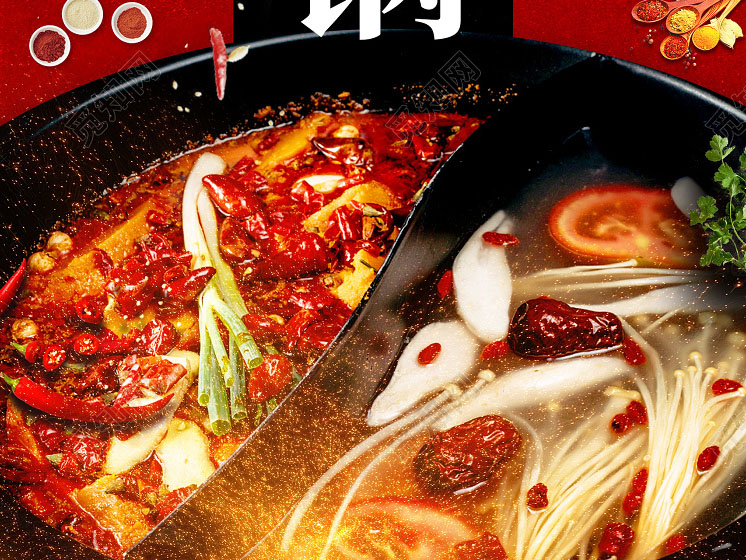 The grandest food feast in the Qing dynasty is the Manchu Han Imperial Feast, which includes 30 dishes from Zhejiang and Jiangsu cuisines, 12 dishes from Fujian cuisine, 12 dishes from Cantonese cuisine, 12 dishes from Manchu cuisine, 12 dishes from Beijing cuisine, and 30 dishes from Shandong cuisine.
The grandest food feast in the Qing dynasty is the Manchu Han Imperial Feast, which includes 30 dishes from Zhejiang and Jiangsu cuisines, 12 dishes from Fujian cuisine, 12 dishes from Cantonese cuisine, 12 dishes from Manchu cuisine, 12 dishes from Beijing cuisine, and 30 dishes from Shandong cuisine.
Modern Times
Chinese food culture met a setback between the late Qing dynasty and the 1970s. Chinese society underwent a big transformation, and the food once again became something precious. Since the reform and opening up, Chinese people began to enjoy a better life quality, and the once-prosperous food culture returned. Many local cuisines took shape, like the Northeast cuisine, Gan cuisine, E cuisine, Ji cuisine, Yu cuisine, Kejia cuisine, etc. In the 21st century, Chinese people regard more on health. Organic food is trending these days.
Related Articles
Eight Famous Chinese Cuisines - Food Culture
Top 13 Most Popular Dumplings in China
Manners Matter on Chinese Dining Table
Recommended Itineraries
14 Days China Cooking and Foodie Tour
Beijing Cooking Class
Private Xian Night and Food Tour by Tuk Tuk
 With no sophisticated utensils, meats were either directly roasted on fire or boiled with water. The food supply was severely unstable. Starvation was common.
With no sophisticated utensils, meats were either directly roasted on fire or boiled with water. The food supply was severely unstable. Starvation was common.
 The book Zhou Li (The Rites of Zhou) mentioned eight delicacies, including Chun Ao (rice with meat sauce), Chun Mu (yellow rice with meat sauce), Pao Tun (simmering, roasting and frying suckling pig), Pao Yang (simmering, roasting and frying lamb), Dao Zhen (grilling tenderloin of the ox, goat, and deer), Zi Zhen (wine-sugar mutton and beef), Ao Zhen (spiced beef), and Gan Liao (oil-roasting dog liver). Since then, cooking became an important art.
The book Zhou Li (The Rites of Zhou) mentioned eight delicacies, including Chun Ao (rice with meat sauce), Chun Mu (yellow rice with meat sauce), Pao Tun (simmering, roasting and frying suckling pig), Pao Yang (simmering, roasting and frying lamb), Dao Zhen (grilling tenderloin of the ox, goat, and deer), Zi Zhen (wine-sugar mutton and beef), Ao Zhen (spiced beef), and Gan Liao (oil-roasting dog liver). Since then, cooking became an important art. Since then, the communication between central China and south areas became frequent, promoting the development of Cantonese cuisine.
Since then, the communication between central China and south areas became frequent, promoting the development of Cantonese cuisine.  Food culture had gone up a new level at the time. The inclusive and powerful Tang dynasty allowed more cultural exchange between China and other states. The living condition was improved significantly. Food was not just for survival, but enjoyment. The cooking techniques were greatly advanced, and food choices were enlarged.
Food culture had gone up a new level at the time. The inclusive and powerful Tang dynasty allowed more cultural exchange between China and other states. The living condition was improved significantly. Food was not just for survival, but enjoyment. The cooking techniques were greatly advanced, and food choices were enlarged. According to the book Jiang Xing Za Lu, a retired minister wanted to have a dinner party with his friends. His friend recommended a chef to him, and the chef required ten goats and 2.5kg green onions to make the meal. The minister wondered why a meal could use ten goats. The chef told him that only the meat on the goat's face would be used to cook dishes. Besides, Song dynasty chefs were particular about the utensils. A good chef only used tools made of jade and agate. Not only the rich people were demanding in terms of food, but ordinary people. In the Song dynasty, a petty dealer who couldn't offer food with delicate packing or decoration won't have much business.
According to the book Jiang Xing Za Lu, a retired minister wanted to have a dinner party with his friends. His friend recommended a chef to him, and the chef required ten goats and 2.5kg green onions to make the meal. The minister wondered why a meal could use ten goats. The chef told him that only the meat on the goat's face would be used to cook dishes. Besides, Song dynasty chefs were particular about the utensils. A good chef only used tools made of jade and agate. Not only the rich people were demanding in terms of food, but ordinary people. In the Song dynasty, a petty dealer who couldn't offer food with delicate packing or decoration won't have much business. Also, Mongolian people brought many Muslims to central China, forming the unique Chinese Muslim food culture.
Also, Mongolian people brought many Muslims to central China, forming the unique Chinese Muslim food culture.  The grandest food feast in the Qing dynasty is the Manchu Han Imperial Feast, which includes 30 dishes from Zhejiang and Jiangsu cuisines, 12 dishes from Fujian cuisine, 12 dishes from Cantonese cuisine, 12 dishes from Manchu cuisine, 12 dishes from Beijing cuisine, and 30 dishes from Shandong cuisine.
The grandest food feast in the Qing dynasty is the Manchu Han Imperial Feast, which includes 30 dishes from Zhejiang and Jiangsu cuisines, 12 dishes from Fujian cuisine, 12 dishes from Cantonese cuisine, 12 dishes from Manchu cuisine, 12 dishes from Beijing cuisine, and 30 dishes from Shandong cuisine.